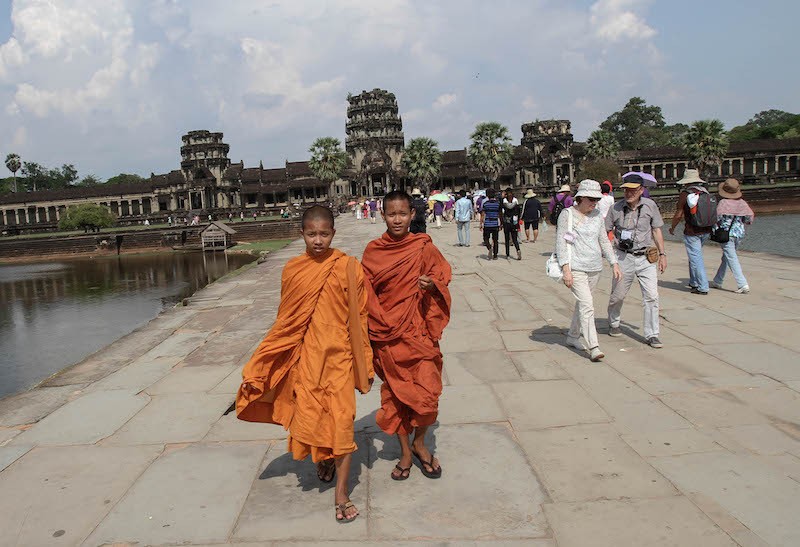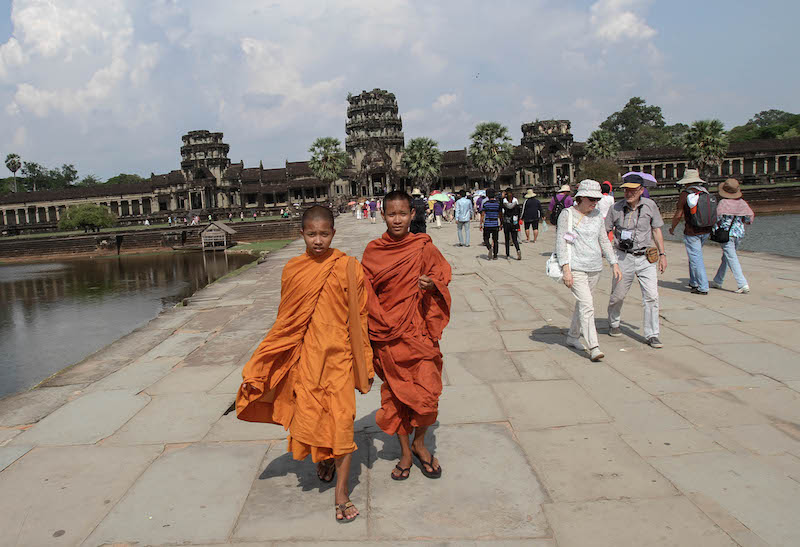Cars, vans, and other vehicular traffic will be barred from traveling along the stretch of road directly facing Angkor Wat, the country’s most iconic tourist attraction, Prime Minister Hun Sen announced on Facebook yesterday.
“From now on, only pedestrians and cyclists will be allowed to enter the road in front of Angkor Wat temple. No any other vehicles will be allowed to pass through the street, but firetrucks and ambulances will be allowed to enter during an emergency,” Mr. Hun Sen wrote.

Apsara Authority, which manages the Angkor site, began enforcing the ban at the beginning of the month, according to spokeswoman Chau Sun Kerya.
“The ban…was put in place about five or six years ago, but it wasn’t being enforced,” Ms. Kerya said. “The purpose of the ban is to organize the area in front of Angkor Wat, deal with traffic jams, make sure that the safety of visitors is being taken care of and prevent the destruction of the temple, as many vehicles pass by and park in that area everyday.”
The spokeswoman said the move had been warmly received by tourists, tour guides and tuk-tuk drivers.
“It is not affecting the number of visitors visiting Angkor Wat and it never will,” Ms. Kerya said.
Tour guides and tuk-tuk drivers had been involved in discussions about the change and “were happy about the arrangement made by the Apsara Authority,” she added.
Khut Khemra, a travel agent at About Asia Services in Siem Reap, said the ban was only a minor inconvenience for Angkor Wat visitors, who would be dropped off at several unloading zones outside of the roughly 100 meters of sectioned-off road.
“There are a few different places where tourists will be dropped off, and they will only have to spend about five minutes walking from each drop off site to the temple,” he said.
Mr. Khemra said the previous situation was chaotic and dangerous, with vehicles weaving through groups of pedestrians.
“It makes the area in front of the Angkor Wat more organized, and it is now safer for tourists to cross the road,” he said.




